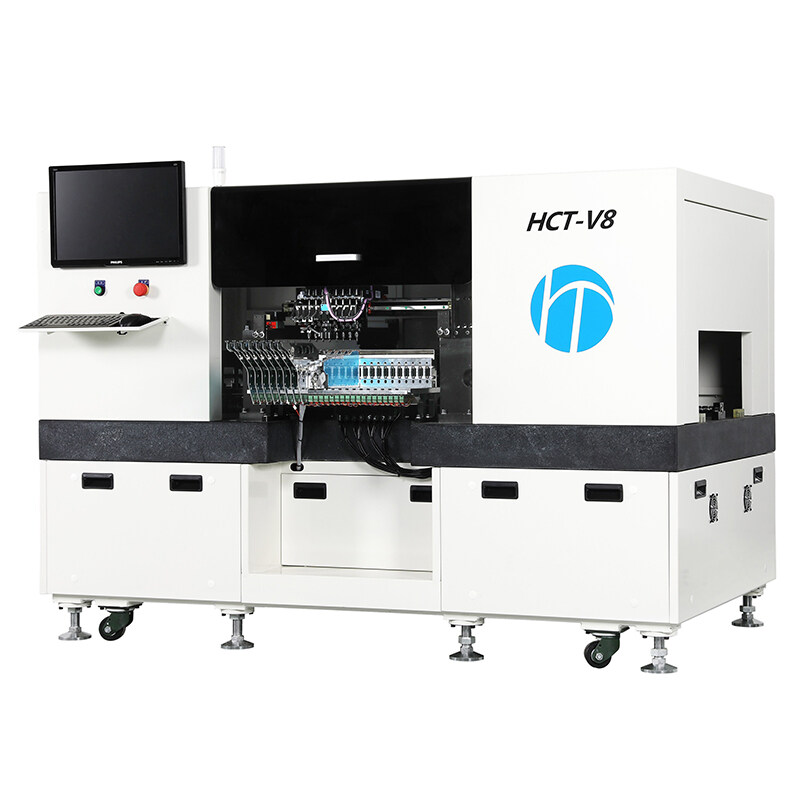Email format error
Email cannot be empty
Email already exists
6-20 characters(letters plus numbers only)
The password is inconsistent
Email format error
Email cannot be empty
Email does not exist
6-20 characters(letters plus numbers only)
The password is inconsistent


Enhancing Efficiency with Automated SMT Labeling Machines
In the realm of modern manufacturing, efficiency is paramount. Every step in the production process must be optimized to ensure maximum output with minimal resources. One area where efficiency can be significantly improved is in Surface Mount Technology (SMT) assembly, particularly in the labeling process. In this post, we delve into the benefits of automated SMT labeling machines and how they revolutionize the manufacturing landscape.
Understanding SMT Labeling:
Before delving into the advantages, let's first understand the importance of labeling in the SMT assembly process. SMT labeling involves the application of identifiers such as serial numbers, barcodes, or product information onto electronic components. These labels serve a crucial role in inventory management, quality control, and traceability throughout the production lifecycle.
Streamlining Production with Automated SMT Labeling Machines:
Traditionally, SMT labeling was a manual task, prone to errors and inefficiencies. However, with the advent of automated SMT labeling machines, manufacturers can streamline their production processes like never before. These sophisticated machines are designed to seamlessly integrate into existing assembly lines, offering a range of benefits.
1. Precision Label Placement: The SMT labeling machines ensure precise placement of labels on electronic components, eliminating the risk of misalignment or inaccuracies. Utilizing advanced vision systems and robotic arms, these machines can precisely apply labels with micron-level accuracy, even on small and delicate components.
2. Increased Throughput: By automating the labeling process, manufacturers can significantly increase throughput rates. Automated machines operate at high speeds without compromising accuracy, allowing for faster production cycles and shorter lead times. This increased throughput not only boosts productivity but also enables manufacturers to meet growing demand without the need for extensive expansion.
3. Reduced Labor Costs: Manual labeling is labor-intensive and time-consuming. By automating this task, manufacturers can reduce labor costs and reallocate resources to more value-added activities. Additionally, automated machines minimize the need for human intervention, thereby lowering the risk of errors and rework. With fewer manual tasks, workers can focus on tasks that require human expertise, such as quality control and process optimization.
Enhancing Quality Control:
Quality control is a cornerstone of modern manufacturing, and automated SMT labeling machines play a pivotal role in ensuring product quality. These machines offer several features that enhance quality control measures.
1. Barcode Verification: The SMT labeling machines can incorporate barcode verification systems to ensure the accuracy and readability of labels. Before applying a label, the machine scans the barcode to verify its content and integrity. Any discrepancies are immediately flagged, preventing defective products from entering the supply chain. This real-time verification process minimizes the risk of shipping errors and improves overall product quality.
2. Traceability: With automated labeling, each electronic component is tagged with a unique identifier, enabling seamless traceability throughout the production process. From the moment a component enters the assembly line to its final destination, manufacturers can track its journey in real-time. This level of traceability is essential for compliance with industry regulations and quality standards. In the event of a product recall or quality issue, manufacturers can quickly identify affected components and take appropriate corrective action.
Integrating Smart Technologies:
Innovation is at the heart of automated SMT labeling machines, with manufacturers continually integrating smart technologies to enhance performance and functionality.
1. IoT Connectivity: Many SMT labeling machines feature IoT connectivity, allowing for remote monitoring and control. Manufacturers can access real-time data on labeling performance, machine status, and maintenance requirements, enabling proactive decision-making and troubleshooting. With remote access capabilities, engineers can diagnose issues and make adjustments without being physically present on the factory floor, minimizing downtime and maximizing uptime.
2. Machine Learning Algorithms: Advanced SMT labeling machines leverage machine learning algorithms to optimize label placement and adapt to varying production conditions. These algorithms analyze data from sensors and cameras to continuously improve labeling accuracy and efficiency. By learning from past labeling experiences, the machine can adjust its parameters in real-time to accommodate changes in component size, shape, or material. This adaptive approach ensures consistent labeling quality across diverse product lines and manufacturing environments.
Conclusion:
In conclusion, automated SMT labeling machines represent a significant advancement in modern manufacturing. By streamlining the labeling process, these machines enhance efficiency, quality control, and overall productivity. As technology continues to evolve, we can expect automated SMT labeling machines to play an increasingly vital role in the manufacturing landscape, driving innovation and competitiveness in the industry. By embracing automation and smart technologies, manufacturers can stay ahead of the curve and meet the demands of an ever-changing market landscape.

